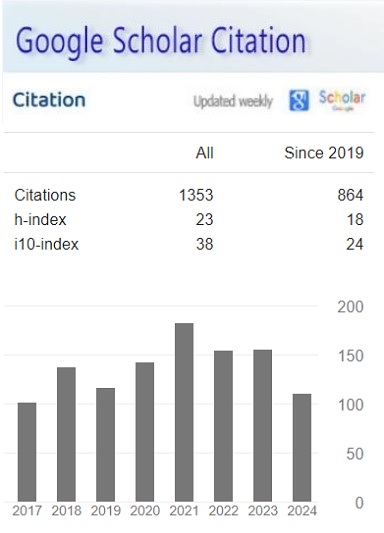Application of the Method of Galdit for Groundwater Vulnerability Assessment: A Case of South Florida
Keywords:
Abstract
Saltwater intrusion is a growing concern for many coastal regions in Florida. Groundwater pumping in Florida has increased over the past years in order to meet the demand for fresh drinking water. Groundwater pumping is reducing freshwater flow toward coastal discharge areas and drawing saltwater toward the freshwater zones of the aquifer. In order to better prepare and mitigate the effects of saltwater intrusion, saltwater intrusion vulnerability maps can be created to indicate areas that may be highly susceptible. The creation of a saltwater vulnerability map, through application of the GALDIT method, allowed us to identify areas that are highly vulnerable to saltwater intrusion. The six factors incorporated into assessing saltwater intrusion vulnerability (groundwater occurrence, aquifer hydraulic conductivity, depth to groundwater level, distance from shore, impact of existing seawater intrusion, and aquifer thickness) allow us to numerically rank and map areas of low to very high vulnerability. The final vulnerability map clearly identified the south eastern portion of Florida as the most vulnerable region in Florida which includes the Miami-dade, Broward, palm beach areas. Strategies need to be defined to manage the long term sustainability of the ground water underneath these critical areas.
References
Aller L., Bennett T., Lehr J.H. & Petty, R. J. (1987). DRASTIC: A standardized system to evaluate groundwater pollution potential using hydro geologic settings, U.S. EPA Report 600/2-85/018.
Barlow, Paul. (2014). "Freshwater-Saltwater Interactions along the Atlantic Coast." USGS Groundwater Resources Program (GWRP)
Carwashes, W. T. I. F. F. (1999). The Class V Underground Injection Control Study. EPA Office of Groundwater and Drinking Water.
Chachadi A. G. and Teresa, L. (2002), Health of the ground water regime in a coastal delta of East Godavari, Andhra Pradesh, coastal 6, pp. 5 – 7.
Chachadi A. G., Ferreira, J.p. L., & Vieira, J. M. P. (2007). Assessing aquifer vulnerability to seawater intrusion using GALDIT method: Part 2-GALDIT indicators description.
Chachadi A. G., Noronha L and Choudri B.S. (2003), “ Impact of Sea‐Level Rise on Salt Water Intrusion in Goa” – TERI, pp. 27‐32.
Chachadi A.G. & Lobo Ferreira, J.P. (2001), Assessing aquifer vulnerability to sea-water intrusion using GALDIT method: Part 2 – GALDIT Indicators Description.
Lobo-Ferreira J.P, Chachadi A.G., Diamantino C., & Henriques M.J. (2005), Assessing aquifer vulnerability to sea-water intrusion using GALDIT method: Part 1 – Application to the Portuguese Aquifer of Monte Gordo.
Shimelis, A., Megerssa, O., & Fantahun, A. (2014). Estimation of Groundwater Recharge Using Water Balance Model Coupled with Base flow Separation in Bulbul River Catchment of Gilgel-Gibe River Basin, Ethiopia. Asian Journal Of Applied Science And Engineering, 3(2), 235-243. DOI: https://doi.org/10.15590/ajase/2014/v3i7/53574
Terrazas M. (1995). Saltwater intrusion: Florida's underground movement.American City and County, 110(2), 46-59.
United States Census Bureau. (2014). About Population Estimates. United States Census Bureau.
United States Geological Survey (USGS): Water Resources of Florida. (2014). USGS Florida Water Science Center
USGS Water Data for the Nation. (n.d.). Retrieved November 10, 2014, from http://waterdata.usgs.gov/nwis
Zafor, M., & Alam, M. (2015). Analysis of Spatial Variation of Groundwater Depths using Geostatistical Modeling in the Vicinity of Sylhet City, Bangladesh. Asia Pacific Journal Of Energy And Environment, 2(2), 61-68.
Downloads
Published
How to Cite
Issue
Section
License
Copyright (c) 2016 Asian Journal of Applied Science and Engineering

This work is licensed under a Creative Commons Attribution-NonCommercial 4.0 International License.








